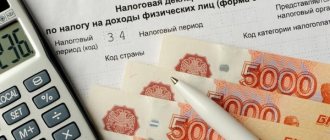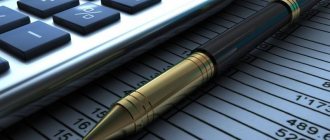There is no need to be afraid of taxes. Especially if taxes are written as simply and clearly as in our article. I read and understood which tax regime to choose, and how not to overpay the tax office. Perhaps the most important information if you are planning to open your own business (save it in your bookmarks).
Sometimes fear of taxes is what separates a person from becoming a sole proprietor. It seems that you can get confused in reporting, delay payments to the tax office and receive many fines. In fact, it's not that scary. We tell you how taxes for individual entrepreneurs are structured.
What is tax
Economic, social and political life in a certain area of territory, called a country, is regulated by the state. The performance of state functions within the specified framework requires financial support.
It is carried out from the state treasury, which consists of the budget (financial component) and state property. Filling the budget is mainly carried out by charging legal entities and individuals a special fee for all income they receive. These fees are called taxes.
Conclusion: taxes are a fee forcibly collected from legal entities and individuals, which is financial support for the functioning of the state.
Collection of taxes is an urgent need, the implementation of which is entrusted to the tax authorities.
The state tax system is a combination of the following components:
- the legislative framework regulating the collection of taxes;
- taxes directly;
- forms, methods and principles of establishing, collecting and adjusting;
- system of control over all stages of taxation.
The main document that regulates all relationships within the Russian tax system (calculation, payment of taxes, punishment for violations) is the Tax Code (TC) of the Russian Federation.
tax code
The Tax Code is a codified legislative act that establishes the system of taxes and fees in the Russian Federation.
Was accepted:
Part 1 - in 1998 by the State Duma and the Federation Council, came into force
January 1, 1999
Part 2 – adopted in 2000, came into force on January 1, 2001 .
The Tax Code is constantly being edited and amendments are made to reflect the current state of the economy in the Russian Federation.
So , from January 1, 2003, amendments were introduced:
- transport tax introduced
- simplified taxation system
dated February 15, 2016 is currently in effect
Tax policy is the tax mechanism used to levy taxes. It is called the fiscal policy of the state.
Main directions of tax policy in the Russian Federation
- creation of an effective and stable tax system
- ensuring the sustainability of the state budget, maintaining its balance
- investment support
- increasing entrepreneurial activity
- reduction of the shadow economy
- support for small and medium-sized businesses (for example, reducing the tax rate, simplifying the registration procedure)
- simplification of tax administration
Terminology
To improve the understanding of the material, let’s consider the basic terms adopted in the tax field:
- A taxpayer is an individual or legal entity obligated by tax law to pay taxes. For example, you have an apartment owned by right of ownership. This automatically makes you a property taxpayer;
- Tax agent is an individual or legal entity who must calculate the amount of tax payments, withhold it from the taxpayer and transfer it to the budget of the appropriate level.
For example, if a citizen is employed, then his tax agent is the employer, he (or the enterprise’s accountant) calculates the tax, withholds it from the employee’s salary and transfers it to the budget; - The tax base is the amount of money or the monetary equivalent of the property owned on which tax must be paid.
It is calculated by multiplying the tax base by the tax rate. For example, gr. Ivanov rented out the apartment under a rental agreement for a year. The amount of income received is the tax base, and in our example, let’s say, it is 180 thousand rubles. Therefore, gr. Ivanov must pay personal income tax (NDFL) = 13% (approved rate) to the state treasury. The amount of payments will be 23,400 rubles; - An object of taxation is an object (sold service, goods, property, etc. in monetary terms) for which a fee must be paid to the treasury;
- The tax rate is the rate of tax deductions per unit of taxation. For example, for personal income tax a rate of 13% has been approved. This means that for the income received (D), an individual must pay tax (N), the amount of which is: N = D x 13%.
- Tax period is the time interval for which payments must be made on existing taxable objects. This period differs for different types of taxes (from a quarter to a year). Thus, property tax for individuals is calculated and paid once a year, and value added tax (VAT) - once a quarter.
A short guide to business taxes
You have just registered your business and now want to choose a favorable tax regime.
Or another situation - you are an experienced entrepreneur, but have a relatively vague idea of taxes, since you spent all your working time on business development, completely delegating tax issues to an accountant. In this article, expert Yulia Batrulyan gives a general idea of all taxes in an express format, explains how imputation differs from simplified taxation, shows the risks of the general tax regime, and suggests how to save, if not money, then at least time. General taxation regime
If you did not have time to declare that you want to pay a simplified tax or agricultural tax in due time (for example, immediately after registration), then the general taxation regime - OSNO - is activated by default. Let’s say right away that for an accountant this is the most labor-intensive system - you need to keep accounting in full, submit balance sheets, count income and expenses, issue invoices, collect and store all invoices and checks. For a business owner, OSNO is the maximum. Let's look into them.
VAT
First of all, this is VAT. The obligation to pay all other taxes depends on the presence or absence of profit, real estate, transport and other things. You must pay VAT immediately as soon as you make your first sale, provide a service or perform work. Moreover, the rule works even if the transaction is unprofitable.
The tax has several rates - 18, 10 and 0 percent. Usually the first one is applied, the second one applies to some socially important goods (such as bread, milk, children's things, medicines). And the cases when you can use a 0% rate are limited (primarily, this is export trade).
The VAT calculation scheme is perhaps the most complex: the tax is imposed on added value, that is, the value that is “added” to a product during production or resale. You can determine the amount to be paid to the budget according to the following scheme: you “extract” VAT from your revenue, your supplier – from theirs. Then from the first amount you subtract the second (this operation is called VAT deduction). You pay the resulting difference to the budget.
Let's give a simple example. You sold one brick at retail for 118 rubles. The tax on the cost of a brick is 18 rubles (118/118*18). Previously, you bought this brick on the wholesale market for 11.8 rubles, including paying the seller VAT - 1.8 rubles (11.8/118*18). You owe 16.2 rubles (18-1.8) to the budget. If the difference between the sale and purchase prices is multiplied by 18%, you get the same result: (100-10)*18%=16.2 rubles.
True, you can deduct VAT provided that the seller issued you an invoice for the brick and transferred these same 1.8 rubles to the budget. The fact is that since 2015, total control of VAT payers has begun: all sellers and all buyers must report on every transaction made! It will not be possible to get a tax refund from a supplier who does not hide information about transactions and does not pay taxes. Therefore, check your partners carefully. This can be done, for example, using the built-in “1C: Accounting 8”.
Income tax
The second most important tax is income tax. Only organizations pay it. The total tax rate is 20%, of which 18% goes to the regional budget. Local authorities have the right to reduce their share to 13.5%. Already from the name of the tax it is clear that it is calculated from profit. Profit is the excess of income over expenses. The indicator is determined based on the results of the quarter, half a year, nine months and a year - the so-called cumulative total. That is, if in the first quarter you worked at a loss, and in the second quarter you made a profit, then part of it will go to cover previous financial failures. You must pay tax on everything that remains after.
Unlike VAT, income tax can be “optimized” - the Tax Code leaves some freedom of action. The amount of income (revenue) is practically not subject to correction. But the amount of expenses depends on the correct use of the Tax Code and competently executed documents.
The legislation imposes two requirements on expenses. First, they must be justified or economically justified. This means that tax authorities will not consider all the company’s expenses as expenses, but only those incurred as part of business activities. For example, wages or the cost of materials are reasonable expenses. But the cost of the director’s trip to Thailand will definitely raise questions from the inspector. The second requirement is that expenses must be documented. This means that for each purchase you must have paper - an invoice, an act, sales receipts, an agreement.
Personal income tax
Entrepreneurs in the general regime pay personal income tax instead of income tax. Income is determined similarly to the profit of an enterprise, that is, income minus expenses. The tax rate for those living in Russia more than half the time per year is 13%.
Property tax
In our country there are two property taxes and they are regulated by different chapters of the Tax Code. One is for “physicists”, the other is for organizations.
The tax rate for companies is 2.2% per year of the value of real estate (regions have the right to reduce the rate of this tax). Land, reservoirs and some other objects are not taxed. For part of the real estate that has undergone cadastral valuation (offices, shopping centers, catering outlets), the rate from 2021 is no more than 2%. In Moscow it is 1.3% in 2021. The annual amount is divided into four quarterly payments.
Individual entrepreneurs pay property tax for individuals, including for real estate used in business. This means that you will not have to calculate the tax yourself; the tax office will still do this. You will only receive a notice with a tax payment deadline of December 1 of the following year. The tax rate depends on the type of property. So, for a dacha, an entrepreneur, like an ordinary citizen, will pay 0.1% of the inventory value, and for a point in a shopping center - 2% of the cadastral valuation (if local authorities have not reduced the tariff).
Transport tax
If an organization or entrepreneur owns transport, then transport tax must be paid for it. Its size depends on the amount of horsepower and the rate set in the region. Entrepreneurs, like ordinary citizens, do not calculate the tax themselves; the tax office does it for them and sends a notice of payment.
Land tax
You need to pay tax if you have land in your property, permanent use or inherited possession. Tax rates are set by local authorities, but they do so within the limits limited by the Tax Code. Rates depend on the type of land. For example, for farmland you will have to pay 0.3% of the cadastre.
Trade fee
The trade tax appeared only in 2015 and has already managed to scare everyone. So far, only Muscovites pay it. In reality, the fee is not so terrible - the amounts paid reduce the main tax of the company or entrepreneur. So, if the company is on OSNO, then the amount of the trading fee can be taken into account when calculating income tax.
Special tax regimes
In addition to the general mode, there are also special ones. Legislators came up with them to make life easier for small and medium-sized businesses. All special regimes are selected voluntarily and subject to certain indicators. Another important point is that special modes can be combined with each other, and some can also be combined with the general one.
Simplified
Simplified taxation system (STS), also known as simplified tax system. The simplified single tax replaces VAT, income tax (or personal income tax for an individual entrepreneur) and partially property tax. To switch to simplified taxation, you need to write an application to the tax office. This can be done within 30 days from the date of registration of the business, or until December 31 (in the latter case, the simplified tax system can be applied from January 1 of the next year). If you don’t like it, the law allows you to return to the general regime starting next year.
Simplified taxation can be combined with UTII. For example, a company using the simplified tax system can, in addition to wholesale trade, open a small store and transfer it to UTII. An entrepreneur can combine the simplified tax system not only with imputation, but also with a patent.
The tax rate and complexity of accounting depend on the chosen object of taxation. There are two of them: “income” and “income minus expenses”. In the first case, multiply all income (money received from buyers or consumers of your services) by 6%. The second option is suitable for the painstaking and disciplined. It is usually more profitable, but requires control over all expenses and documents. The rate in this case is 15%, and the difference between income and expenses is taken as the base.
You can calculate which option is more profitable on your own. But this task is not easy, so it is better to use special calculators. For example, in “1C: Accounting 8” (rev. 3.0) there is a mode comparison.
You can read more about the nuances of using simplified language in the
1C:ITS
Agricultural Tax
The Unified Agricultural Tax (UST) is very similar to the simplified tax system, but only agricultural producers can switch to paying it. The form of business organization is not important: it can be a peasant farm or a cooperative. You need to pay 6% of the difference between income and expenses, switching is as easy as to the simplified tax system - just inform the inspectorate of your desire before December 31 or within a month after registration.
Imputed
The unified tax on imputed income (UTII) replaces the income tax and personal income tax for entrepreneurs, VAT and property tax. Previously it was mandatory. This meant that if regional authorities classified cargo transportation as UTII, then all carriers were required to pay exclusively this tax. Since 2013, imputation has become voluntary.
It is impossible to transfer the entire business to a single tax; this regime is additional and is always combined with the main one - general, simplified or agricultural tax. Example: a manufacturer of felt boots pays VAT, profit tax and property tax on wholesale supplies. Retail trade in felt boots is subject to UTII.
You can pay a single tax only for 14 types of activities. And this small list is usually limited to regions. For example, many Muscovites still do not know about the existence of UTII, since in Moscow it is allowed only in the advertising business. Typical types of business for imputation are small shops, restaurants and cafes, household services, transportation of passengers or goods.
The tax is calculated using the formula: imputed income x 15 percent. Imputed is the potential income of an entrepreneur in a particular industry, which is annually indexed by inflation.
More details about the nuances of using UTII can be found
here .
Patent
Only very small individual entrepreneurs, whose number of hired employees does not exceed 15 people, can buy a patent. A patent can be combined with any tax regime. For example, an entrepreneur who owns a restaurant, a shoe repair shop and a tire sales company can pay UTII for the first, buy a patent for the second, and pay a single simplified tax on wholesale sales of tires. Please note that you need to purchase a separate patent for each type of activity.
The tax on a patent is calculated similarly to imputation - the possible income determined by the state is multiplied by a rate of 6%. The size of potential income is determined by regions taking into account their specifics, but they cannot set it to more than 1,000,000 rubles per year. The patent replaces traditional taxes - VAT, personal income tax and property tax.
“Salary taxes” that cannot be replaced by anything
If you have hired employees, then in relation to them you are, firstly, a tax agent, and secondly, an insurer. The first means that you are obliged to transfer personal income tax (13%) from the salary paid to the budget. This applies not only to full-time employees, but also to people working under contracts, services, etc. Please note that you must remit the tax! That is, first it must be withheld from the employee’s salary, and then sent to the budget. You cannot do this at the expense of the company's money, since you are only a paying agent.
What if you agreed with people on a “net” amount? In this case, the amount “in hand” must be divided by 87 and multiplied by 100. This way you will find out the remuneration that must be indicated in the contract. For example, having promised to give an employee 100 rubles, in the contract you will indicate 114.94 rubles (14.94 of which will go to the budget).
But you will have to be an insured at your own expense. Every time you pay employees, you must transfer insurance contributions to funds - pension, medical and social insurance. The general rate is 30% (there is also accident insurance, where the rate depends on the industry, on average - 1%). The only bonus for the company from these expenses is that social insurance compensates for sick leave and maternity benefits for employees.
Important point:
no tax regime exempts you from the duties of a tax agent and policyholder.
Functions of taxes
In total, there are 4 functions included in tax levies, which are shown schematically in the figure below and are described in detail below.
The fiscal function of taxation is the main one. It has the main role of filling the state treasury with funds.
Fiscal means collecting information and transmitting it.
Tax authorities monitor taxpayers and impose sanctions on violators, thereby stimulating timely and full payment of taxes.
The distribution function is to divide the funds received from taxation of individuals and legal entities. Having entered the treasury, the money is allocated for various social and other government projects. Here is how state budget funds will be distributed in 2021:
*click on the picture to open it full size in a new window
The control and accounting function of taxation allows you to monitor and record the economic activities of individuals and legal entities, identify sources of income and expenses. In addition, reliable control prevents the criminalization of the economy.
The stimulating function of taxes is to support certain types of economic activities through the use of tax benefits. This applies to agriculture, small businesses, self-employed citizens (who is this?).
An example for dummies
Using an example, we will look at where this VAT is hidden. You bought milk at the store. It cost 30 rubles, the same amount you paid. The seller pays a 10% tax on this milk, that is, he will pay the state 3 rubles. But if he has an invoice, which states that he bought this product for .1, and the invoice already includes VAT, then the seller, based on the documents, does not calculate 3 rubles, but only the difference and pays 0 VAT. 39 rubles.
In order for an organization to receive a deduction, you must also have an invoice for the goods for this invoice. Failure to have one document may result in full VAT payment.
Types and classifications of taxes
Tax classification depends on the classification factor. Traditionally, they are divided according to the following criteria:
- by definition of the tax base: direct,
- indirect;
- chords,
- federal,
- progressive,
Next, let's analyze each type of tax in a little more detail.
Direct and indirect types of taxes
Direct taxes are those that are of an explicit nature, that is, levied directly on the individual or legal recipient of any income.
The amount of payment depends on the amount of income. The table below lists all types of direct taxes. They are set as a percentage of the tax base.
| Direct | Indirect |
| Customs duties |
| Excise taxes |
| Land tax | Value added tax (VAT) |
| Sales tax |
For example, personal income tax. persons in our country is 13%. Consequently, if the employer accrued a salary of 30 thousand rubles to his employee Ivanov, it means that he must pay 3900 rubles to the treasury for Ivanov. (this is 13% of 30 thousand).
Indirect taxes include taxes that are charged on goods and.
Example: furniture manufacturer IP Sidorov manufactured and offered a cabinet for sale. Taking into account all costs and expected profits, Sidorov set the price for his product at 10 thousand rubles.
But IP Sidorov is a “grated kalach” and knows that he will have to pay value added tax (VAT) to the treasury on the cost of the cabinet sold. From 2021, VAT is 20%. Therefore, Sidorov puts his closet up for sale not for 10 thousand, but for (10 thousand + 20%) = 12 thousand rubles.
Consequently, the buyer will pay 12 thousand rubles upon purchase, and thus become a tax payer (but not a tax agent!). The manufacturer (aka seller), IP Sidorov, will become a VAT tax agent after the sale of the cabinet (an intermediary between the buyer and the state treasury). Having received 12 thousand rubles at the cash desk, he is obliged to pay 2 of them in the form of VAT.
What is VAT?
In some stores you can see price tags that indicate the price of the product with and without VAT. But not everyone understands what it really is, where all these numbers are calculated from and, most importantly, why.
This is a kind of duty included in the price of each product. We, as buyers, purchase goods with VAT already added. For all goods it is 18%. For some goods that are vital for the population, such as bread, milk, cereals, salt, etc., VAT is 10%. If the product is imported, the tax rate is 0%.
Who pays VAT? VAT payers are organizations and individual entrepreneurs in the main taxation system. In some cases, payers may be persons on the simplified tax system.
This video talks very well about VAT accounting in the simplest words, as they say, “for dummies”:
Accord and income taxes
Income taxes depend on the amount of income received. Earlier in the article, we looked at an example with personal income tax (what is it?).
Let's take another one: corporate income tax. The tax base in this case is income minus production and other costs, expenses for advertising, training, and research activities. The remaining amount of profit after deductions is subject to tax at a tariff rate of 20%.
A chord in music is the simultaneous sound of several sounds. Lump sum taxation assumes that the amount of payments does not depend on the size of the tax base. Figuratively speaking, these are several taxes, calculated on average and paid “in a chord” (at the same time).
An example in the Russian Federation is the unified tax on imputed income (UTII). Income is called imputed because it is not calculated each tax period individually for a specific tax agent, but is estimated, calculated for a specific type of activity. UTII is a special tax regime that replaces several payments.
How to switch to OSNO
There is no need to report the transition to OSNO, because this regime operates in the Russian Federation as the main one without restrictions on types of activities, and it is applied by default. If you have not declared in the prescribed manner about the transition to a special tax regime, you will work on the general taxation system.
In addition, you will find yourself on OSNO if you no longer meet the requirements of special preferential tax regimes. For example, if an entrepreneur working on a patent has exceeded the permissible number of employees, then all income received from patent activities will be taxed based on the requirements of OSNO.
The general taxation system is not subject to any restrictions on types of activities, income received, number of employees, value of property, etc. Almost all large enterprises work on OSNO, and as VAT payers, they also prefer to work with those who pay this tax.
Federal, regional and local types of taxes
Let me remind you that the money paid by taxpayers is transferred to the state budget.
Its structure is subject to a strict hierarchy:
See how taxes are distributed among budgets of different levels:
There are also combined options. An example is corporate income tax. General interest rate = 20% (Article 284 of the Tax Code of the Russian Federation). 2% of the amount paid goes to the Federal budget, and 18% to the local budget.
How does it pay?
This tax is paid by filling out a tax return. In each reporting period, up to and including the date, a declaration is submitted and the accrued VAT is paid. You can highlight dates on the calendar when declarations need to be made.
- January - the declaration is submitted for the 4th quarter. last year.
- April - 1st quarter current year.
- July - 2 quarters of the year.
- October - 3 quarters
If the day of the month following the reporting month falls on a weekend, submission of reports and payment of tax is extended to the first weekday after this date.
It becomes clear that VAT is paid quarterly. Timely completion and payment of all taxes saves the company from fines and penalties.
Progressive, regressive and proportional taxes
In this type of classification (according to the ratio of the tax rate to the object of taxation), three types are distinguished, schematically shown and briefly described in the figure below:
Let's look at examples of how these types of taxes are calculated:
- Proportional view - the tariff rate is unchanged:
income (rub.) tax rate (%) tax amount (RUB) Tax to income ratio 10000 10 1000 0,1 20000 10 2000 0,1 30000 10 3000 0,1 Conclusion: the higher the income, the higher the tax amount. It is proportional to income. Example: personal income tax with a flat rate of 13% (except for winnings).
- Regressive type - the tax rate decreases as income increases:
income (rub.) tax rate (%) tax amount (RUB) Tax to income ratio 10000 15 1500 0,15 20000 12,5 2500 0,125 30000 10 3000 0,1 Conclusion: the higher the income, the lower the tax-to-income ratio. As an example, we can cite insurance contributions to the Pension Fund: 22% - if the tax base does not exceed 1,150,000 rubles, 10% must be paid if the specified amount is exceeded.
- Progressive type - the tax rate increases as income increases:
income (rub.) tax rate (%) tax amount (RUB) Tax to income ratio 10000 10 1000 0,1 20000 12,5 2500 0,125 30000 15 4500 0,15 Conclusion: the higher the income, the higher the tax amount. Moreover, the ratio of the amount of tax and income also increases (compare with the proportional principle of taxation).







